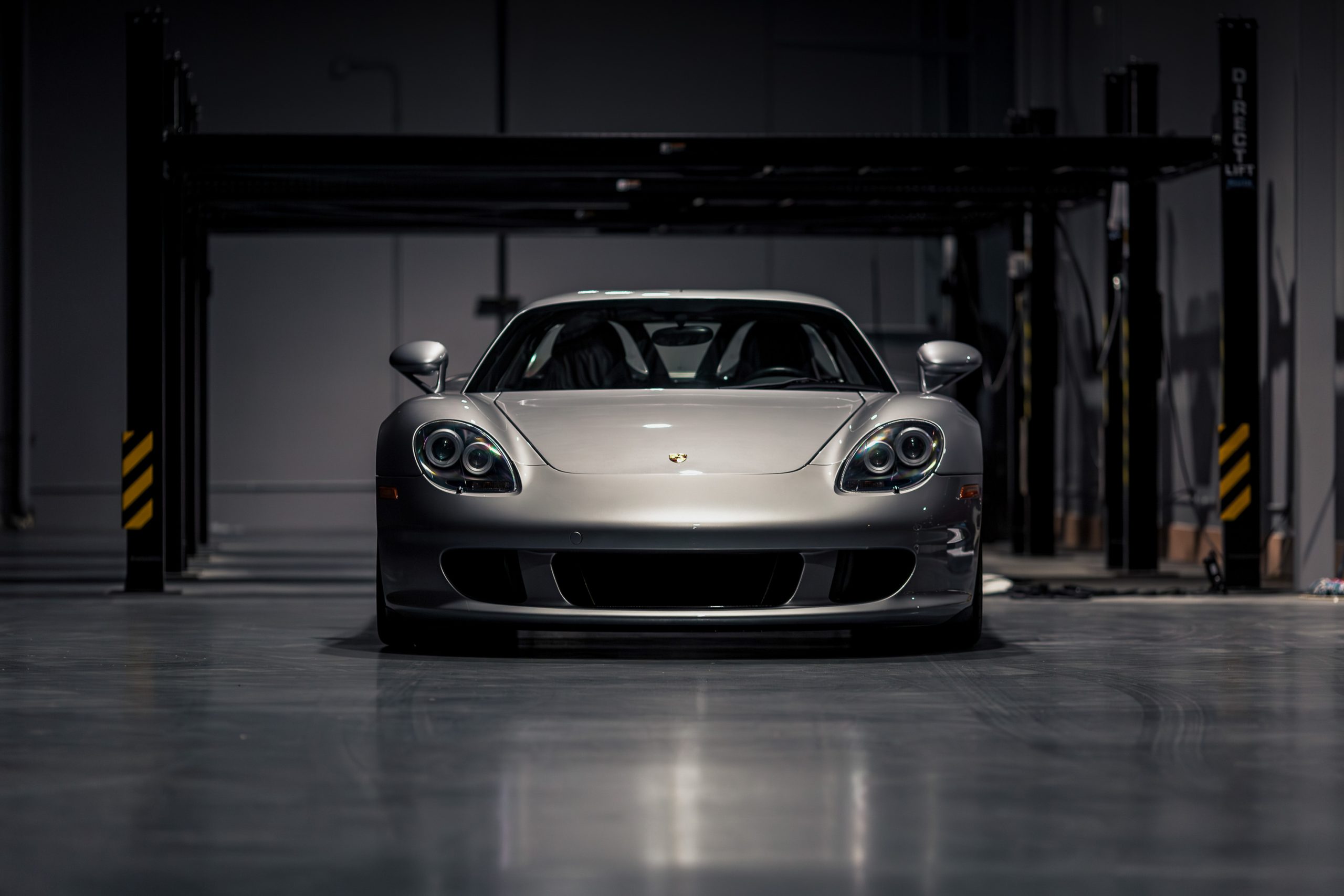“End of the road” Fabcar Porsche 935/84
Highlight from WOB CARS' Porsche 75th Anniversary Race Car Collection
Highlight from WOB CARS' Porsche 75th Anniversary Race Car Collection
The ultimate GT Speedster comes to light?
Porsche prototype heads to Monterey Car Week
Would a blizzard stop the show?
Celebrating 24 Heures du Mans' 90th Anniversary Race
There are 935s, and then there are 935s…
Based on the Porsche 962 Group C Le Mans race car
A rare Gem with impeccable historic racing credentials
Successful Italian period racing history
$2M Porsche Prototype heads to Monterey
Racing milestone comes to market
Rare Porsche Inducted into the National Historic Vehicle Register
The made-for-TV IROC series was a remarkable innovation and the genesis of the all-conquering 935.
A pre-race teaser of the exciting weekend to come.
1987 - 1988. Unlucky and Unprepared Porsche CART Race Car
By the early fifties Porsche found that modified production cars would no longer win races. The 550 was the answer. The original giant killer had arrived.
The first two Porsche 550s (Chassis #550-01 & #550-02) were coupes
Only 15 prototypes (including coupes) were made until regular production began in 1954 of the Porsche RS Spyder.
The giant killer
The 550A was based on Porsche’s first purpose-built racing car, the mid-engined RS 550 Spyder.
Planned as a successor to the Porsche 550, the car was discontinued in favor of the revised 550A and the Porsche 718. Single example was destroyed in a spectacular crash.
The 718 Cayman Race Car
Changes thanks to new regulations and a larger engine gave us the RS60
The 1961 Porsche RS was one of the last Spyders made by Porsche that used the potent 4-cam engine. It was a successor to the 1960 RS60
For 1958, the 718 RSK Spyder was modified to compete in FIA Formula racing events. Gone was the conventional two-seat layout now replaced with a single seat in the middle.
For 1959, Porsche created a completely new Formula 2 car instead of the Mittellenker-version of the 718 RSK. Became known as the 718/2 or 718 F2.
The fifth and the last of the 718/2 F2 cars, with chassis number 718/2-05 was an experimental formula racing car
For the 1961 F1 season Porsche created a new car called 787.
The Porsche 804 competed in Formula One (F1) in 1962. Porsche developed an 8-cylinder engine for it.
Porsche’s Type 904, officially called the Carrera GTS because Porsche and Peugeot were in dispute over numeric designations with “0” in them, succeeded the RSK Type 718 as the last sports-racing iteration of the 356 series.
The Porsche 904 debuted late in 1963, for the 1964 racing season. The 1965 Porsche 904 Carrera GTS variant to compete in the FIA-GT class
In 1965, the 904’s second and final production year, some examples received a version of the 911’s 2.0-liter flat-six. This version was dubbed the 904/6.
Three factory 904 race cars were fitted with a flat eight-cylinder power plant derived from the 1962 804 F1 car
Developed for endurance sports car racing, the 906 was a street-legal racing car that raced in the FIA's Group 4 class
Nine factory vehicles received the 2-liter, six-cylinder boxer engine with an injection system
For the 1966 Le Mans 24h race, long-tail LH ("Langheck") versions were made and now the standard 906 were called as 906 K ("Kurz", short in German)
The 906 Spyder was the first Porsche racing car built under Ferdinand Piëch's orders and there could be only a person as determined as Piëch to use Lotus parts on a Porsche.
Another four factory 906s received an air-cooled eight-cylinder boxer engine of the type 771, which was already used in the 904/8.
The 907 was conceived and built as a way to win the 1967 Le Mans race.
The First Porsche Ever to Win a 24-Hour Endurance Race.
The 908/02 K Spyder and 908 K Flunder Spyder were basically the same cars with slightly different bodywork
There was a belief that longer bodies are more aerodynamic and are therefore better for faster tracks, so a 908 Flunder Spyder with a longer tail was created
In the late sixties, Ferdinand Piëch wanted Porsche at the top of motor sports and the 908 was his answer.
In the late sixties, Ferdinand Piëch wanted Porsche at the top of motor sports and the 908 was his answer.
Notching up over 50 major victories and more than 100 podium results, the 908/02 Spyder is one of the most successful Porsche race cars
This 908 received a completely new tubular frame based on that of the 909 Bergspyder and its three liter engine was moved forward.
Porsche decided to end its 20-year history of factory sports car racing and sold the 908/03 cars to customers. In 1975, some 908s were fitted with turbocharged engines.
The 909 Bergspyder did not win a major event. It ended up being an awesome laboratory of ideas (not all worked).
In 1967 and 1968, Porsche's lightweight 910 Bergspyder was a championship-winning machine
Porsche 910 was the evolution of the 906 with Ferdinand Piëch as its main driving force and Hans Mezger
Developed at Porsche’s race department using the platform of their new 993 Carrera 2
Combined the RSR’s purity of purpose with a tuned version of the 993 Turbo’s twin-turbo engine
Röhrl's one-off drive at the 1981 San Remo Rally is regarded as one of the greatest drives ever


